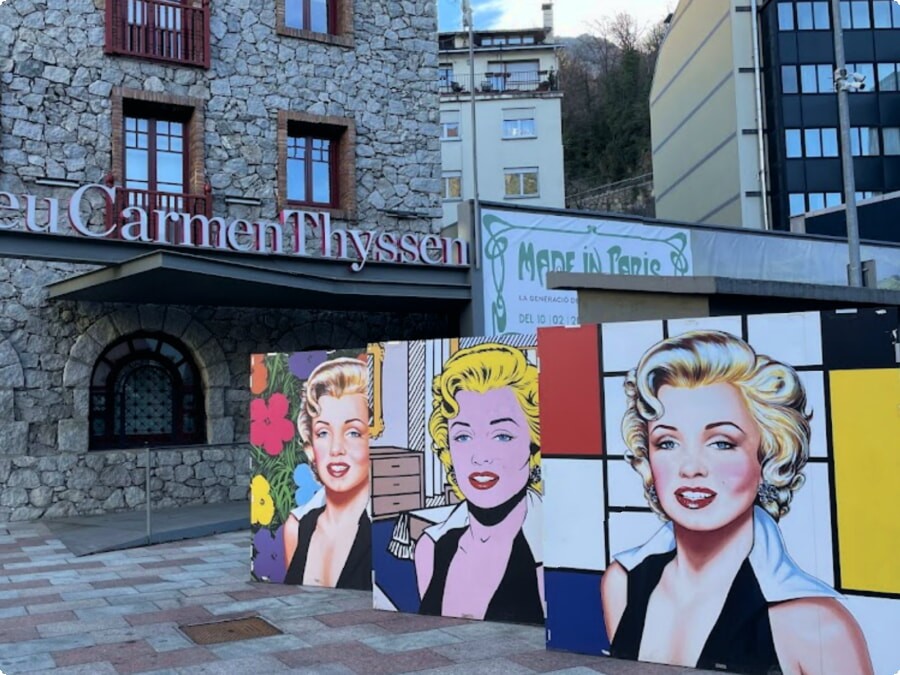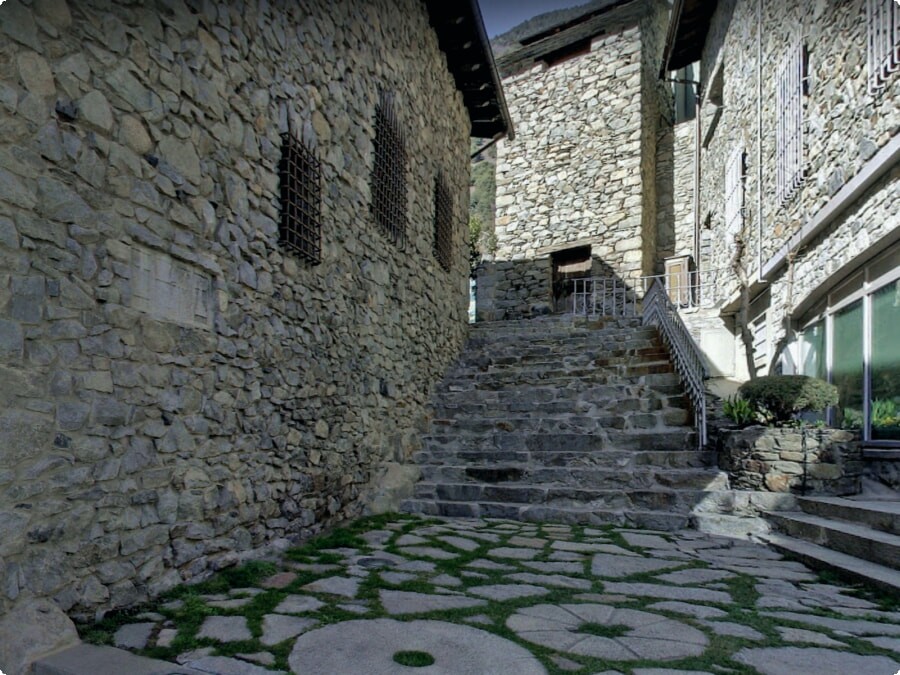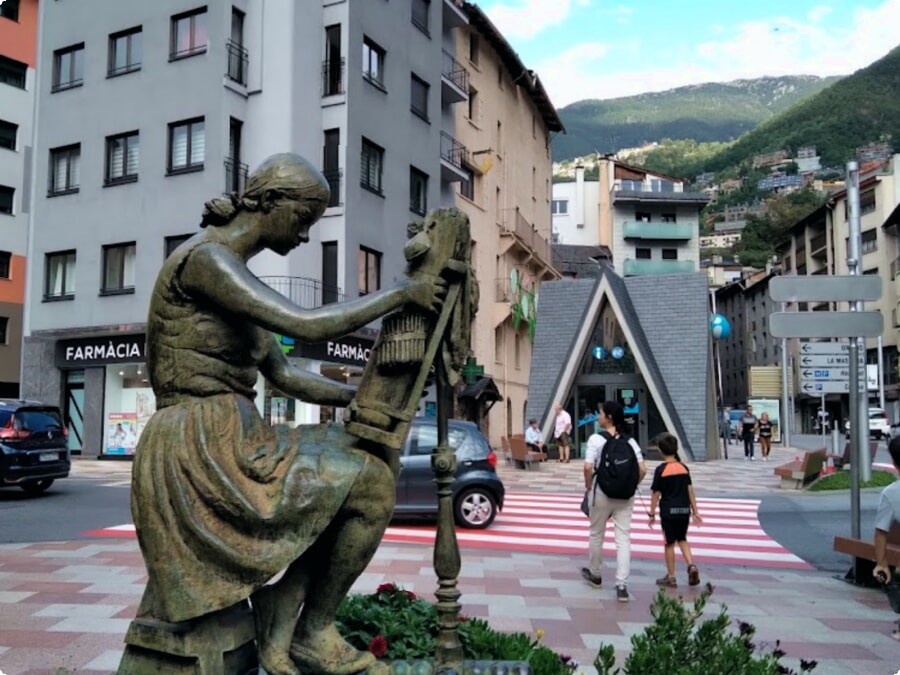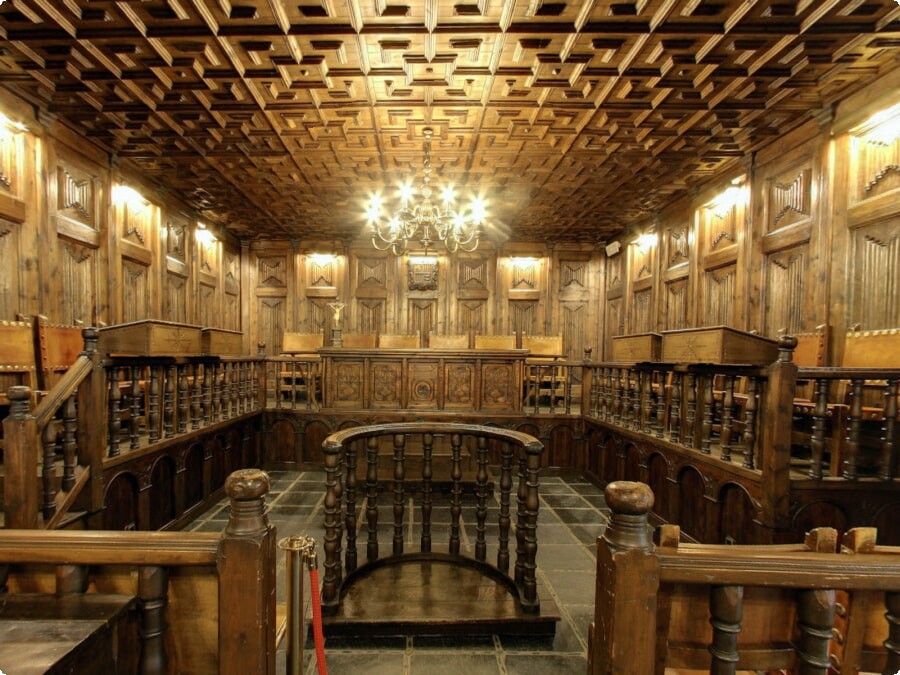There’s a tiny country between Spain and France most people, even well-traveled Europeans, don’t know about. This is Andorra, the sixth smallest nation in Europe.
This small mountainous country has plenty of pretty architectural sights to explore, especially in the capital, Andorra la Vella. Start with the Santa Coloma Church that features a round Lombard Romanesque bell tower.
Thyssen Museum
The Thyssen Museum is one of the most visited art museums in Europe. It features a large collection of paintings, sculptures, and other objects from the Spanish golden age. The museum is located in Madrid, Spain’s capital city. It is a part of the “Golden Triangle” of museums, which includes the Prado and Reina Sofia museums. It is a must-visit for anyone who wants to learn about Spanish art.
The museum is a great place for families. It offers a variety of activities for children, including tours and workshops. There are also several interactive exhibitions and a playroom. The museum’s staff is dedicated to making the visit enjoyable for children of all ages.
This museum was established in 1992 with the intention of preserving and displaying a collection of paintings by the Thyssen family. It has since grown to include more than 1,600 works of art from the thirteenth century to the present day. It is one of the most visited museums in Spain, and it is known for its diverse selection of styles and periods. The museum’s collections are organized by category and are easily accessible to visitors.
In addition to its permanent collections, the Thyssen Museum also hosts temporary exhibitions. The museum’s director, Tomas Llorens, and curator Guillermo Solano have focused on establishing the Thyssen Museum as an active player in the international art scene through the exchange and loans of paintings. These activities have been a major factor in the museum’s success, and have contributed to its worldwide recognition.
A visit to the Carmen Thyssen Andorra Museum is a must-do for any art lover. The museum contains masterpieces from the Baroness’ private collection, and it also offers a number of different temporary exhibitions each year. Currently, the museum is featuring “Made in Paris,” which showcases paintings that capture the beauty of Paris’s art scene.
The museum is located in Les Escaldes, in the parish of Escaldes-Engordany. It is housed in a building called the Palacio de Villahermosa, which was built at the end of the eighteenth century and is an example of neoclassical architecture from Madrid.
It is impossible to get acquainted with the sights of Andorra in one day, as well as in a week, but you can see the maximum number of new places with the help of a rented car at one of the country's airports. For example, in Andorra la Vella you can rent a car from 17 euros per day.

Casa de la Vall
Casa de la Vall, which means House of the Valley, is a building of incredible beauty and significance. This magnificent natural stone structure, which looks like a small fortress, was built in 1580 and is one of the most important buildings in Andorra. It has witnessed many of the most significant events in Andorra’s history and is one of the country’s main symbols. It has also been an administrative center, a governmental house, and the seat of government in Andorra from 1701 to 2011.
The House of the Valley was originally built as a manor and tower defense by the Busquets family. However, in 1702, the council of Andorra bought it and started to use it as a parliamentary building. It has been a symbol of Andorra ever since. It is even depicted on the country’s 1 euro coin!
Today, the House of the Valley houses a historic chapel and the General Council Hall on its first floor. Its other two enfilades have been renovated to host various governmental activities and are also open for visitors to explore.

The exterior of the building is impressive as well, with a rounded gabled roof made of slate, granite keystones on the former main door, and traditional lime and sandstone mortar. On the front, there is a statue of the Busquets family and a traditional coat of arms of Andorra with the motto: “Virtus, Unita, Fortior” (Uniting virtues are stronger).
In addition to its prestigious function as the seat of the government, Casa de la Vall has been a hotel, a prison, and a court at different times. It is surrounded by recent sculptures that represent some of the most important events in Andorra’s history, such as the 1993 constitutional referendum.
The house is open to the public and can be visited during guided tours of Andorra. The tour includes visiting the interior of the house, including the rooms where important decisions were made and the parliamentary hall. The tour also includes a visit to the kitchen and a room where the Andorran criminal court once operated.

Tobacco Museum
The Tobacco Museum features an array of exhibits and art centered around the smoking of tobacco. This is a practice that has touched every civilization in some way and is still widespread today. Even though it is a controversial habit and a serious health risk, the museum is intended to show how the plant has become an integral part of human life. Located in a welcoming Parisian venue, the museum displays various objects used by smokers in different places and times. The museum also showcases different pieces that were obtained from archaeological digs.
The building’s design is meant to resemble a box that is open on one side. The interior is made of glass and steel, with a spiral staircase leading to the main floor. It is a stunning sight and the perfect place to visit when you are in Andorra.

In the past, the building was the home of an old Andorran family. The heirs donated the building to the museum, which is now home to exhibitions and an auditorium. The Tobacco Museum features a large collection of agricultural equipment, tin tobacco containers, and pipes. The museum also houses a room dedicated to the history of tobacco farming and cultivation in Andorra. The Tobacco Museum is a must-visit attraction for all tourists and Andorrans.
While Andorra is known for its skiing and shopping, the country is also a beautiful place to explore its architecture. The most significant architectural sights of Andorra are the stone Romanesque churches that are scattered throughout the country. The church in Sant Esteve, for example, was built in the 12th century and is a classic example of Andorran construction. The church has a rectangular tower instead of the cylindrical bell tower that is typical of many Andorran buildings.
The church is also home to a sculpture of a lace-maker, or puntaire, and is an important cultural and historical landmark for Andorra. The church was listed as a national monument in 1992. It is also a popular tourist destination, and is visited by visitors from all over the world.